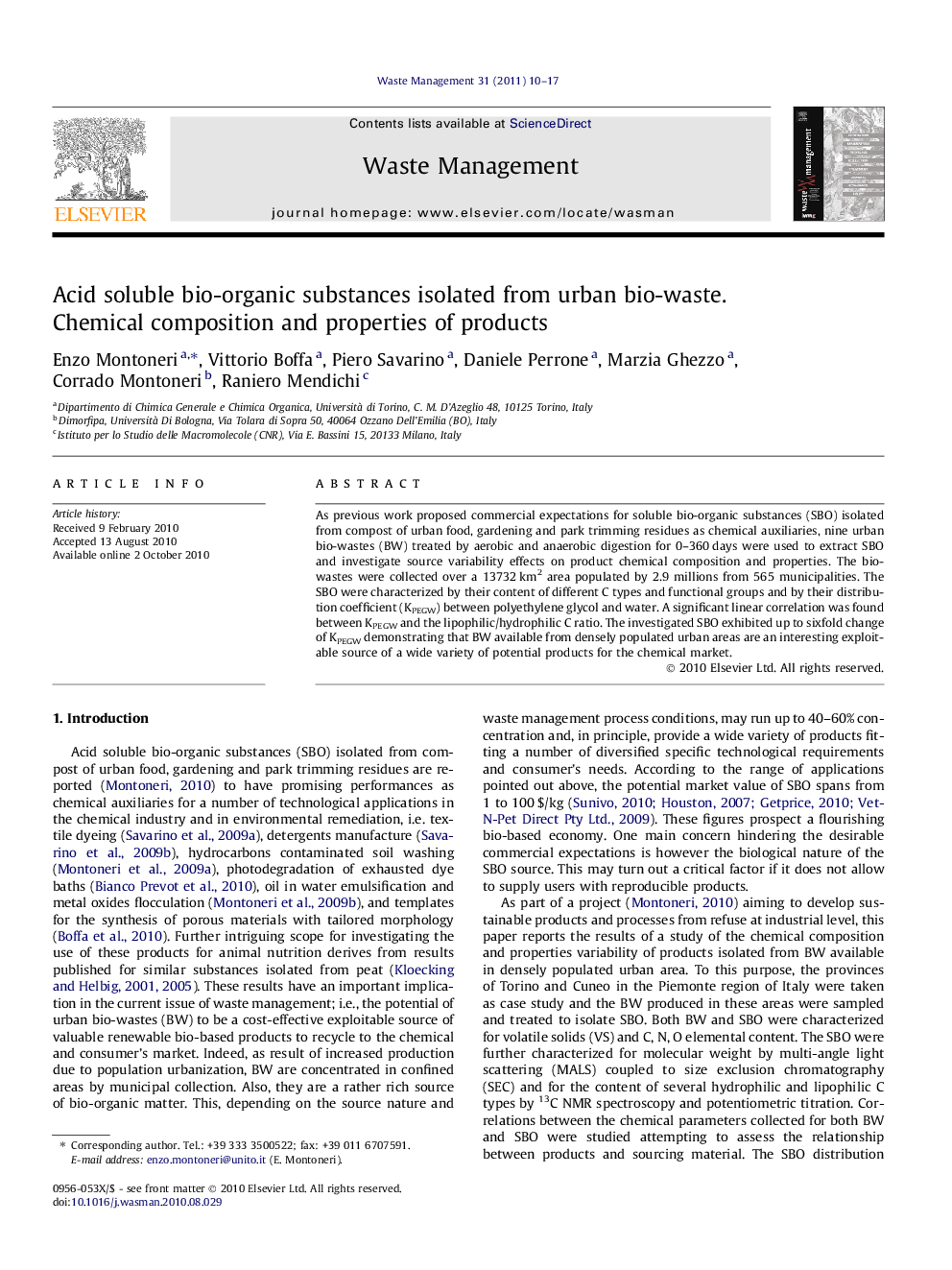| کد مقاله | کد نشریه | سال انتشار | مقاله انگلیسی | نسخه تمام متن |
|---|---|---|---|---|
| 4472097 | 1315057 | 2011 | 8 صفحه PDF | دانلود رایگان |

As previous work proposed commercial expectations for soluble bio-organic substances (SBO) isolated from compost of urban food, gardening and park trimming residues as chemical auxiliaries, nine urban bio-wastes (BW) treated by aerobic and anaerobic digestion for 0–360 days were used to extract SBO and investigate source variability effects on product chemical composition and properties. The bio-wastes were collected over a 13732 km2 area populated by 2.9 millions from 565 municipalities. The SBO were characterized by their content of different C types and functional groups and by their distribution coefficient (KPEGW) between polyethylene glycol and water. A significant linear correlation was found between KPEGW and the lipophilic/hydrophilic C ratio. The investigated SBO exhibited up to sixfold change of KPEGW demonstrating that BW available from densely populated urban areas are an interesting exploitable source of a wide variety of potential products for the chemical market.
Research highlights
► Nine bio-wastes (BW) are used as source of soluble bio-organic substances (SBO).
► SBO distribution coefficient KPEGW linearly correlates with SBO lipophilic/hydrophilic C ratio.
► KPEGW exponentially decay upon increasing the aging time of the sourcing BW.
► The investigated SBO exhibited up to sixfold change of KPEGW, demonstrating that BW are virtually an interesting exploitable source of a wide variety of chemical products.
Journal: Waste Management - Volume 31, Issue 1, January 2011, Pages 10–17